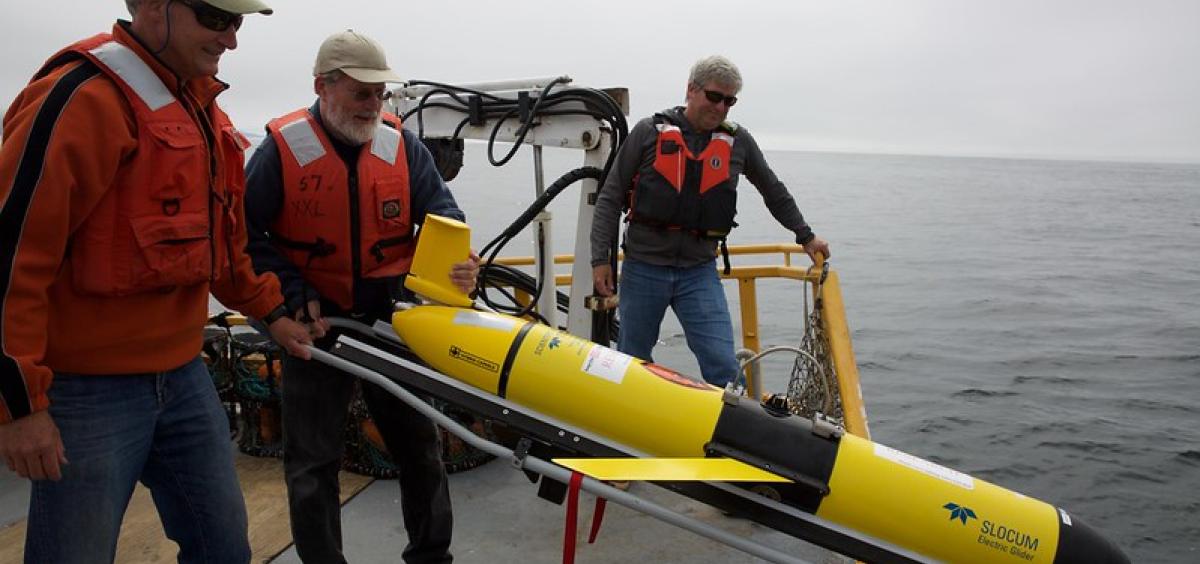
CORVALLIS, Ore. – Low oxygen conditions that pose a significant threat to marine life are widespread and increasing in coastal Pacific Northwest ocean waters as the climate warms, a new study shows.
Researchers found that in 2021, more than half the continental shelf off the Pacific Northwest coast experienced the low-oxygen condition known as hypoxia, said the study’s lead author, Jack Barth of Oregon State University.
“We’ve known that low oxygen conditions are increasing based on single points of study in the past, but this confirms that these conditions are occurring across Pacific Northwest coastal waters,” said Barth, an oceanography professor in the College of Earth, Ocean, and Atmospheric Sciences. “The 2021 season was unusually strong compared to past years but with climate change, we are headed in a direction where this may be the norm.”
The new study, published recently in Nature Scientific Reports, is based on data collected by an unprecedented number of research vessels and autonomous underwater gliders that were collecting measurements in the ocean during summer 2021.
The vast amount of data gave researchers a more complete and nuanced understanding of hypoxia’s severity and spatial distribution in the coastal waters of the northern California Current, said Barth, who also serves as special advisor to OSU’s Marine and Coastal Opportunities program
“This picture has been needed for a long time by policymakers and fisheries managers who make decisions about ocean uses,” he said.
On average, nearly half of the continental shelf, an area the same size as Oregon’s Willamette Valley and slightly smaller than the state of Connecticut, experienced hypoxia during the summer upwelling period in 2021.
Wind-driven upwelling brings deeper, colder, nutrient rich water to the surface of the ocean, fueling a productive upper-ocean food web. However, that same upwelling pushes deep, low-oxygen water near the ocean’s bottom toward the coast. Dissolved oxygen levels are driven even lower near the seafloor by decay of naturally occurring phytoplankton raining down from above. When oxygen levels drop significantly, many marine organisms, including economically and culturally important Dungeness crabs, cannot relocate quickly enough and die of oxygen starvation.
Some areas of the coastal ocean saw higher rates of hypoxia than others, the data showed. Areas of the southern Oregon coast experiencing less hypoxia, for example. Heceta Bank, a region about 35 miles off Florence that is known for its abundant and diverse marine life, also is more resilient to hypoxic conditions. However, the region inshore of Heceta Bank toward Cape Perpetua, where coastal waters are not as well flushed, is subject to hypoxia.
Mapping the varied rates of hypoxia along the coast also confirmed for scientists the interplay between the geography of the sea floor and ocean dynamics, Barth noted.
“I was amazed when I saw the maps,” he said. “It really corroborates our understanding of how underwater geography affects hypoxia.”
A comparison of maps from past years shows a consistent trend of hypoxia increasing over time. Hypoxia was basically nonexistent, at 2%, from 1950 to 1980, about 24% from 2009 to 2018, and 56% in 2021. That trend persists even when researchers account for year-to-year variability, Barth noted. Researchers are now developing maps for 2022 and 2023 using the 2021 maps as a guide.
The findings provide policymakers and fisheries managers additional decision-making tools as ocean conditions continue to change, Barth said.
“On land, we know where the grassland is, where the forests are, where the rivers run so we can sustainably use those resources. If we don’t have that kind of understanding of the ocean, how do we make plans for sustainable use of the ocean?” he said. “When we think about all the different uses of the ocean, from fisheries to marine reserves, and impacts such as heat waves and renewable energy development, we can manage all of those things better if we understand the environmental situation.”
The study also highlights the need for regular monitoring and mapping of hypoxia along the Pacific Northwest coast as conditions continue to change, Barth said.
“This effort is a demonstration of what we’re capable of doing if we coordinate our efforts,” he said. “Now that we have done this once and understand some of the key geographic features, we can target our sampling to best monitor these areas over time.”
Co-authors of the paper are Stephen Pierce and Anatoli Erofeev of OSU’s College of Earth, Ocean, and Atmospheric Sciences; Francis Chan and Cheryl Morgan of OSU’s Cooperative Institute for Marine Ecosystem and Resources Studies; Brendan Carter and Richard Feely of NOAA’s Pacific Marine Environmental Laboratory; Jennifer Fisher, Kym Jacobson, Aimee Keller and Victor Simon of NOAA’s Northwest Fisheries Science Center; and Leif Rasmuson of the Oregon Department of Fish and Wildlife.
About the OSU College of Earth, Ocean, and Atmospheric Sciences (CEOAS): The college is renowned for research excellence and academic programs that span the earth, ocean and climate sciences, as well as the human dimensions of environmental change. CEOAS inspires scientific solutions for Oregon and the world.
Michelle Klampe, 541-737-0784, [email protected]
Jack Barth, [email protected]
Click photos to see a full-size version. Right click and save image to download.